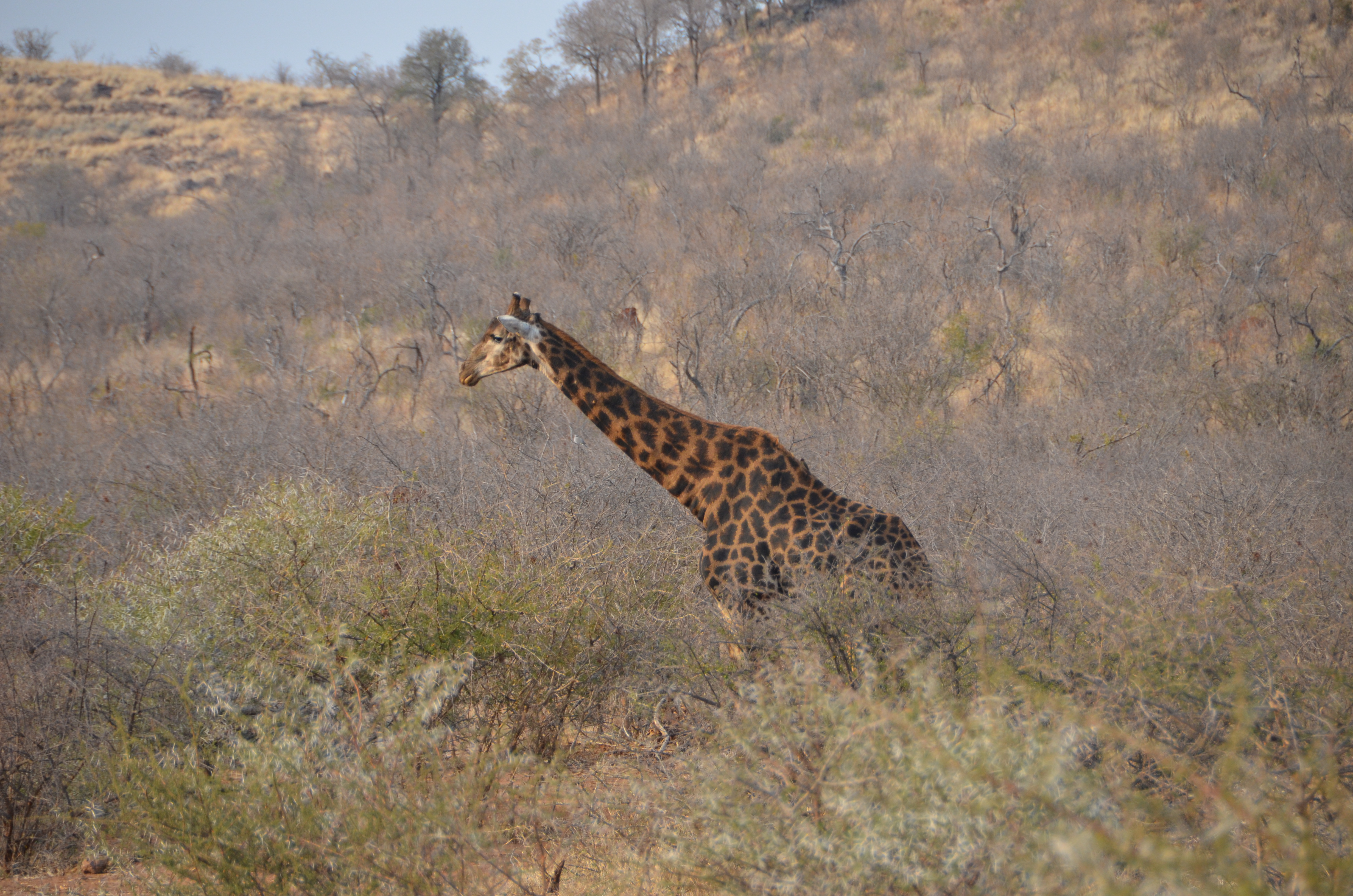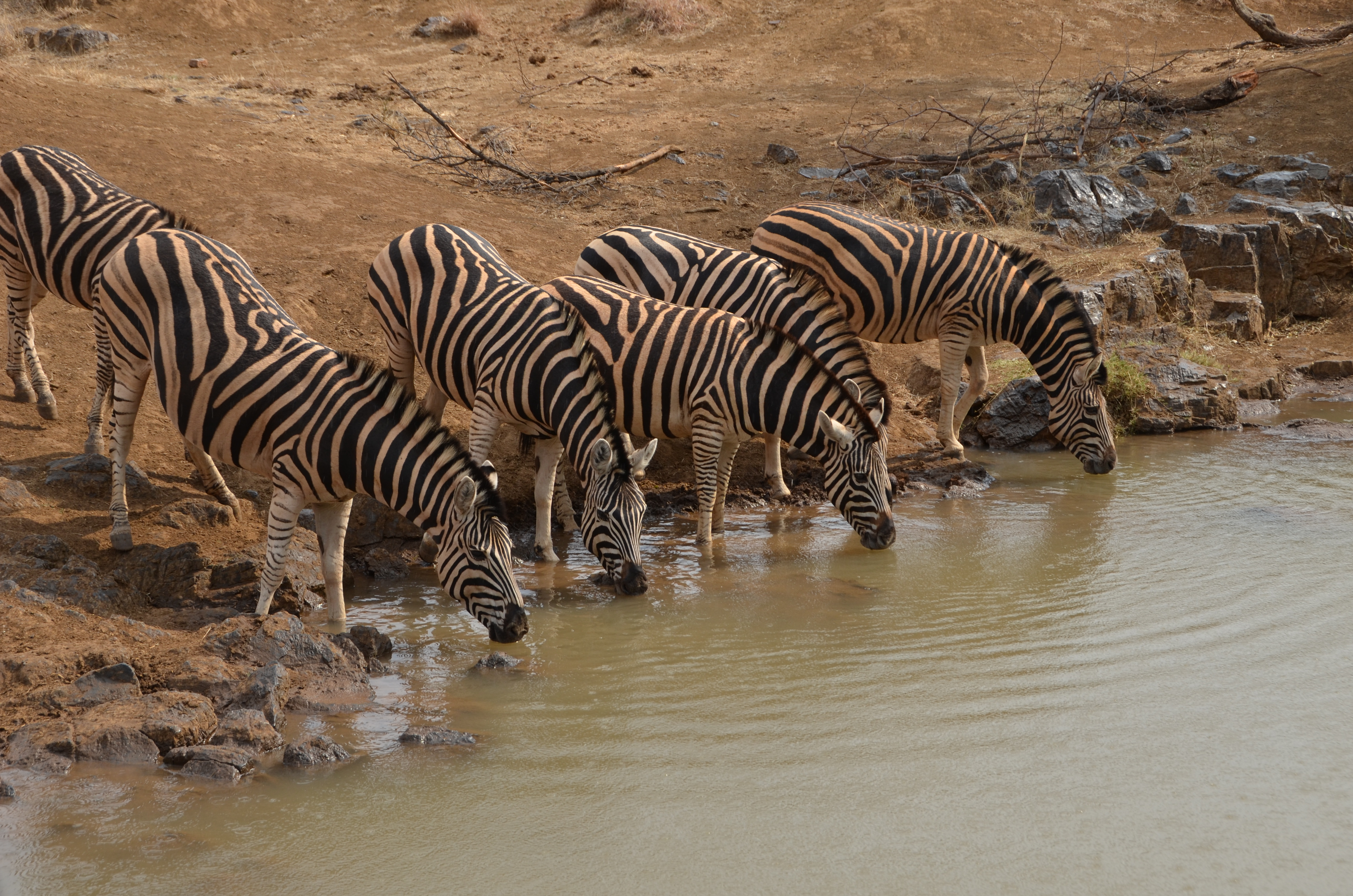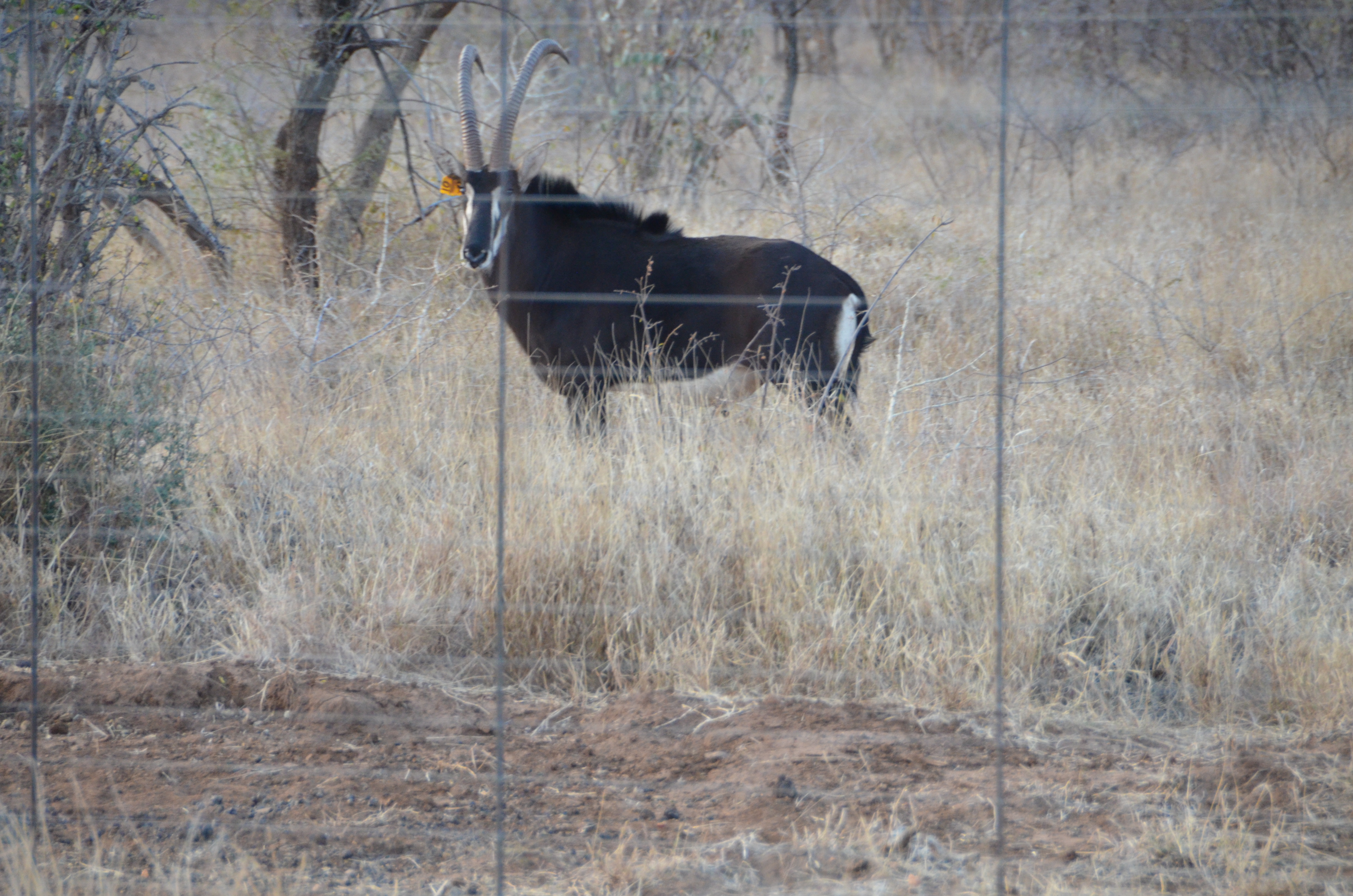Out of Africa
The silence is stunning. We are motoring through the South African Veldt and when the engine is turned off you hear only silence. It is broken by an occasional bird’s trill, the bird itself an iridescent, curved-beak glider looking to get lucky.
The air is fresh and clean. Some days there are no clouds at all, half a globe overhead of cerulean that meets the mountains and the plains below. The animals don’t smell. Their dung, which is all around, of course, doesn’t smell.
The animals—rhinoceroses, elephants, kudu, giraffes, zebra, a dozen kinds of antelope, warthogs, and so on—move with a graceful gait, leap and run, in almost total silence. We round a turn and encounter a herd of elephants unseen before. They regard us with weary eyes, continually lifting parts of saplings and tree bark, underbrush and grass and stuffing it into their mouths.
The lions, which one day we tracked for hours before finding them and alerting the other guides by radio, on another day appear voluntarily on a rise beside the road. Their attitude is nonchalant, since nothing that might come along would pose a problem for the pride. The male is rarely seen, gone marking territory and chasing off other males. There are five prides in the reserve, and a sixth group of renegades who hang out together.
This is the Madikwe Game Preserve, an area larger than the state of Rhode Island about an hour’s plane ride north of Johannesburg, not far from the Botswana border. We stayed at the Morukuru Family Lodge, which is a rare, private facility, and is a member of the upscale Relais and Chateaux Group of properties. We chose this because it has a private guide, scout, chef, butler, and so forth, and we can set our own schedules. We don’t go out with another group, and we determine where and when we do go out.
Our habit was to leave at 6 am, stop for a break at a clearing around 8:30, return for breakfast at 10, swim, relax, play games until lunch at 3, depart again from 4 to 7 with a break at 6, and then have dinner at 8. The chef checked with us constantly about our preferences for meals. Our breaks were coffee, hot chocolate, cookies, dried fruits, chips, and an assortment of alcohol and mixers, all served on a table stowed in the Rover.
We rode in a Land Rover Defender, a tank of a vehicle which, when off-road, easily bulldozed small trees down. It had a top but no sides and the visibility was excellent. It could carry 12 people, but we were only 7. Some of the trail were torturous, but going completely off-road was nearly insane. Our scout was perched in a padded seat on the left front bumper (right hand drive) and would signal our guide who was driving abut how best to get through the obstacles.
This was once farmland. All of the land was purchased by the government and all of the animals were shipped in from other parts of the country. The giraffes stood up in trucks. The elephants, leopards, cheetahs, water buffalo and everybody else all rode in. There are over a thousand elephants alone. Think about the magnitude of that project.
One morning we took a walking tour. Our guide always had his rifle, a .375 monster which was bolt action and took one shell at a time. He created the shells himself, about the length of your index finger, and carried them in loops on his belt. In 11 years he’s only had to chamber one round, and didn’t have to fire.
Some fabulous facts:
- Elephants are so inefficient in their digestion, that they must eat about 20 hours a day. In their dung you can see all of the undigested food. When they eat a certain apple-like fruit here, for example, it goes through their system, emerges in the dung, and you can dig it out, wash it off, and eat it because it’s otherwise undisturbed.
- Lions will be bored by your presence as long as they view you at an angle, but if you approach them directly they will become dangerous.
- Most animals ignore vehicles but are very wary of people walking.
- The Cape Buffalo (water buffalo) wakes up in a black mood which gets worse as the day goes on. It’s an unpredictable and vicious animal.
- When you hear hoofs in African they are never horses but zebras. Zebras can’t be used to ride or as pack animals because their backs are not strong enough to support weight.
- A wart hog digs a burrow, and if you frighten it, it’s so fast that it can break your leg if it hits you as it runs out.
- The wildebeest is 70% of a lion’s diet. There are thousands upon thousands of impala, but they don’t provide enough meat for a lion. The impala are successful because their diet is quite varied—grass, shrubs, saplings, underbrush—so hat they can always find food. And they all tend to give birth at the same time, meaning even all the predators’ best efforts can’t stop the herds from increasing.
- Elephant herds are run my mothers and even grandmothers. They throw the young bulls out when they become troublesome—at about age 16.
- Cheetahs and leopards are rarely seen. But we saw the remains of a waterbuck in a tree, stored by a leopard which would return at another time to eat leftovers.
- An exceptionally smart or lucky impala managed to get into our compound and roams around without a care in the world about predators.
- Baboons are vicious, and have canine teeth the same size as a lion’s.
- We saw a great many white rhinos, usually a mother and child, but also one rare and endangered black rhino.
- It’s tough to walk through the underbrush and the thorns whether you’re a human or an animal, so the animals would often walk on the many trails. We could track their movements by watching the tracks and following.
- Impalas are often found in the company of zebras and wildebeests because the animals understand the advantage of having as many ears, noses, and eyes on the lookout as possible.
- The mongoose, which routinely kills cobras and mambas, are as small as our puppy, but lightning-quick with razor-like teeth.
- A sable (a large antelope with beautiful curved horns back to its shoulders) costs about $70,000 US to buy for the park, so rare and splendid are they.
A giraffe moving with slow dignity from tree to tree (they eat “high hanging fruit”) looks for all the world like a great clipper ship before the wind. A jackrabbit, caught in our headlights one night adjacent to an electrified fence, and not wanting to become dinner in the bush, simply outran the vehicle, doing about 12 miles per hour until it found a suitable exit.
The environment looks for all the world like Jurassic Park, and when you stop in a great valley for a break, and see giraffes in the distances, rhinos in the bush, and zebras and impalas standing around as if at a meeting, you can picture the stegosaurs, triceratops, and T-Rexes roaming around.
I cannot fathom anyone shooting these magnificent creatures, though I won’t practice the dreadful “presentism” of condemning the past because it doesn’t measure up to our lofty standards today. Instead, we’re going to be making annual donations to the Wildlife Fund.
I hope to return to Africa next year, perhaps to a cruise in Botswana on the Chobe River where we can observe the river life. Hippos are supposed to be as permanently irritable as Cape Buffalo.











Monica Waggoner
Incredible! Thank you so much for sharing this beautiful adventure. Looking forward to visiting now, one day, for sure!
René Vidal
Alan – you’re out of this world! Thanks for sharing. RMV